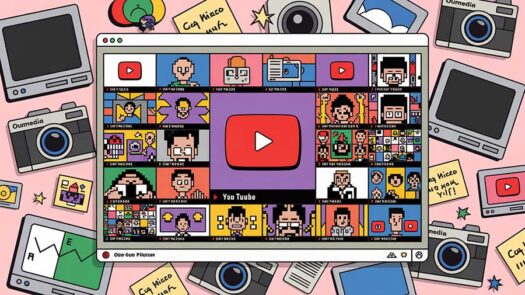But are they undermining free speech on the Net in the process?
This column appeared June 14, 2001, in the Online Journalism Review. Here’s the version on the OJR site.
If you’re like me, you probably feel a twinge of moral ambiguity every time you download a free MP3 file — say, the Vapors’ “Turning Japanese.” (OK, so maybe no harm there.) But what’s an ethically upright citizen of the Web to do when she comes across the curious little copyright icons and permissions notices that have begun to sprout at the bottom of various online publications?
In recent weeks, an increasing number of online news publications have begun featuring links on staff-written stories that grant instant reprint and permission rights — for a price. These online clearance systems permit a user to purchase the rights to republish a news story on another site, or e-mail a formatted copy of the story to groups of recipients, or print out formatted copies for personal or business use.
‘There’s a certain velocity with which information now moves in this society, and copyright protections curtail that free exchange of ideas.’ – Lee Tien, EFF
Anyone who has sought reprint rights from a newspaper knows that the process can be as pleasant as a tooth extraction. Like countless other reporters, I was once barred from photocopying my story clips at Kinko’s until I produced a note from the principal — um, release form from corporate. But what of copyright in the free-for-all of cyberspace, where Napster has fed our appetite for swapping files without conscience, much less with clearance from a controlling legal authority?
The Copyright Clearance Center wants you and me to know that the rules remain the same. “The Web loosened the inhibitions of people to borrow other people’s property, but that doesn’t change the law, which automatically gives you copyright protection the moment you produce a piece of content,” says Rick Miller, manager of market analysis for Boston-based CCC. Miller thinks people will warm to the Web-based system, which “cuts the approval time from two weeks to two minutes.”
CCC, which handles licensing rights for about 10,000 print publications, debuted its new online service in the New York Times in March and will roll out similar services on the Web sites of the Wall Street Journal and the Boston Globe this summer. (A precursor of the service can be seen on Dow Jones’ djreprints.com.)
A competing instant clearance service in Renton, Wash., called iCopyright.com represents 300 publications, including online newspapers in Knoxville, Tenn., Raleigh, N.C., and Santa Fe and Albuquerque, N.M. The Los Angeles Times recently canceled its arrangement with iCopyright, citing lack of use by readers, while the financial news site CBSMarketWatch.com signed up on May 15.
Under both the CCC and iCopyright systems, each client publication sets its own rules and rates. CBSMarketWatch charges $5 to e-mail a formatted story to 1-20 recipients and charges sites $1,500 for permission to post an article for up to three month and $4,800 for up to a year. (Earth to MarketWatch: You’ll get no takers at these rates.) The Albuquerque Journal also got a bit carried away, charging not just for e-mail and posting rights but for linking to the Journal’s articles. In an amazing bit of chutzpah, the paper charges 50 bucks to deep-link to a Journal article with the publisher’s blessing, and the link stays live for only seven days — not exactly the best bargain on the Web.
While CCC and iCopyright have a head start among online publications, several other newcomers are angling for a piece of the action. It may be a big pie: the American Society for Industrial Security estimates that stolen information costs U.S. businesses more than $300 billion annually.
Among the new breed of digital rights management companies:
- San Francisco startup Alchemedia, whose Clever Content software disables a user’s ability to print, copy or forward any text or image that the copyright owner deems off-limits — and, nice try, but it’s clever enough to thwart your screen capture work-around.
- ContentGuard, backed by Xerox and Microsoft. It’s touting XrML, a scripting language that lets online publishers set permission rights in a story’s raw code.
- Copyright.net of Nashville, Tenn., a hired gun that will prowl the Net to hunt down unauthorized uses of clients’ copyrighted material.
“Napster sent a wakeup call to media CEOs,” says Ranjit Singh, president of ContentGuard. “Publishers are now looking around for solutions to protect their online assets from being compromised.”
Second thoughts at the New York Times
Treading gingerly into the bubbling cauldron of online copyright is The New York Times. The paper’s new online permissions system debuted March 23 in its Business section, and the Times had planned to roll out the service in every other section by late April.
In that original version, the company charged $300 for permission to reprint an article in an online newsletter, whether it has 20 subscribers or 199,999. It cost $200 to reprint a nytimes.com headline in a book. And it set you back $250 for “internet use” of an article, though republishing the same article in an “online magazine” cost $600. Plans were afoot to charge users for the privilege of e-mailing an article to more than 20 recipients.
But earlier this month the Times overhauled its permission system to eliminate all references to online uses. Now, you can reprint Times stories in a book, magazine or print newsletter, but if you want to use it online, you’ll have to phone the company.
Peter Simmons, director of The New York Times Agency, who’s in charge of implementing the new system, says the Times still charges the same rates for digital use of its content, but pulled those pricings from its site because “we were premature. New York Times Digital asked us to hold off for a while. The idea is, let’s see how this goes and what happens with it. We want to make sure we’re on the right track.” Down the road, the Times plans to again add online pricings for digital reprints, but no time frame has been set, he says.
Meantime, CCC, the Times’ longtime partner in licensing rights, says that online clearances are the wave of the future in the industry and dismisses competitors’ approaches that “lock down” online content through special coding or encryption. “Newspapers and magazines aren’t in the game of locking down their content,” Miller says.
When copyright goes too far
Lee Tien, senior staff attorney for the Electronic Frontier Foundation, the cyber-rights advocacy group, goes further, warning that both encryption and the new breed of online permissions systems threaten to impede the free flow of information.
“We forget how much we rely on fair use and unauthorized quoting in everyday life,” he says. “If they could, these digital rights management companies would build a machine into our bodies to prevent us from singing a song in the shower because, technically, that may be an infringement of a copyrighted work. Since they can’t do that, they’ve decided to build it into the Internet.
“Stringent enforcement of copyright can be harmful to free speech, dissent — the things that let us talk freely about our culture,” Tien says. “No one particular set of controls is all that onerous, but taken in the aggregate, these systems encumber speech. There’s a certain velocity with which information now moves in this society, and copyright protections curtail that free exchange of ideas.
“News publications think of content as property, a commodity, a jewel, and so it’s tempting for them to want to place technological fences around their content to extract the maximum amount of profit,” he says. “But what you’re talking about is also speech, from a First Amendment viewpoint, and it’s also culture, something we all participate in and have a stake in. The news is something that creates a vital sense of community for any society. People should be free to share and transmit news items without having to jump through all the hoops that content controllers want to impose.”
Tien reminds us that copyright law sprouted from centuries-old trade regulations that were put into place to protect businesses against unjust competition, so that a publisher couldn’t simply copy and republish a competitor’s story without investing any resources into doing the legwork and reporting. “But over the last century its meaning has expanded from a means of regulating businesses into a truncheon being wielded against consumers,” he says. “And now the content controllers also want to be the arbiters of what constitutes fair use.”
It’s a fair bet that news publishers looking to broaden their offerings will soon turn to serialized e-books, celebrity images and digital music that rely heavily on encryption schemes. Users who crack those “electronic envelopes” to get at the restricted content would automatically be in violation of the overly broad 1998 Digital Millennium Copyright Act.
In other words, a teenager who makes an unauthorized copy of Sarah Michelle Gellar’s photo from a protected news site would be guilty of a felony. (Also see Not-So-Public Figures.)
Certainly, indiscriminate pirating of online publications’ content should not be tolerated. But a begrudging, puritan approach to copyright will be not only harmful to public discourse but ultimately self-defeating.
Those who most strongly back the tightening of copyright rules online take a narrow view of the Internet’s increasingly vital role in our lives. The Net is not a channel; it’s the ocean. The Net is not just another medium, like publishing or television or cinema. It’s the future of all communication between people in different places.
What’s ahead? Look for more publications to adopt online permissions systems in the coming year. And look for those systems to be widely ignored in an ever-widening cultural rift.
Psst! Wanna trade that Wall Street Journal article for a slightly used Vapors MP3?




